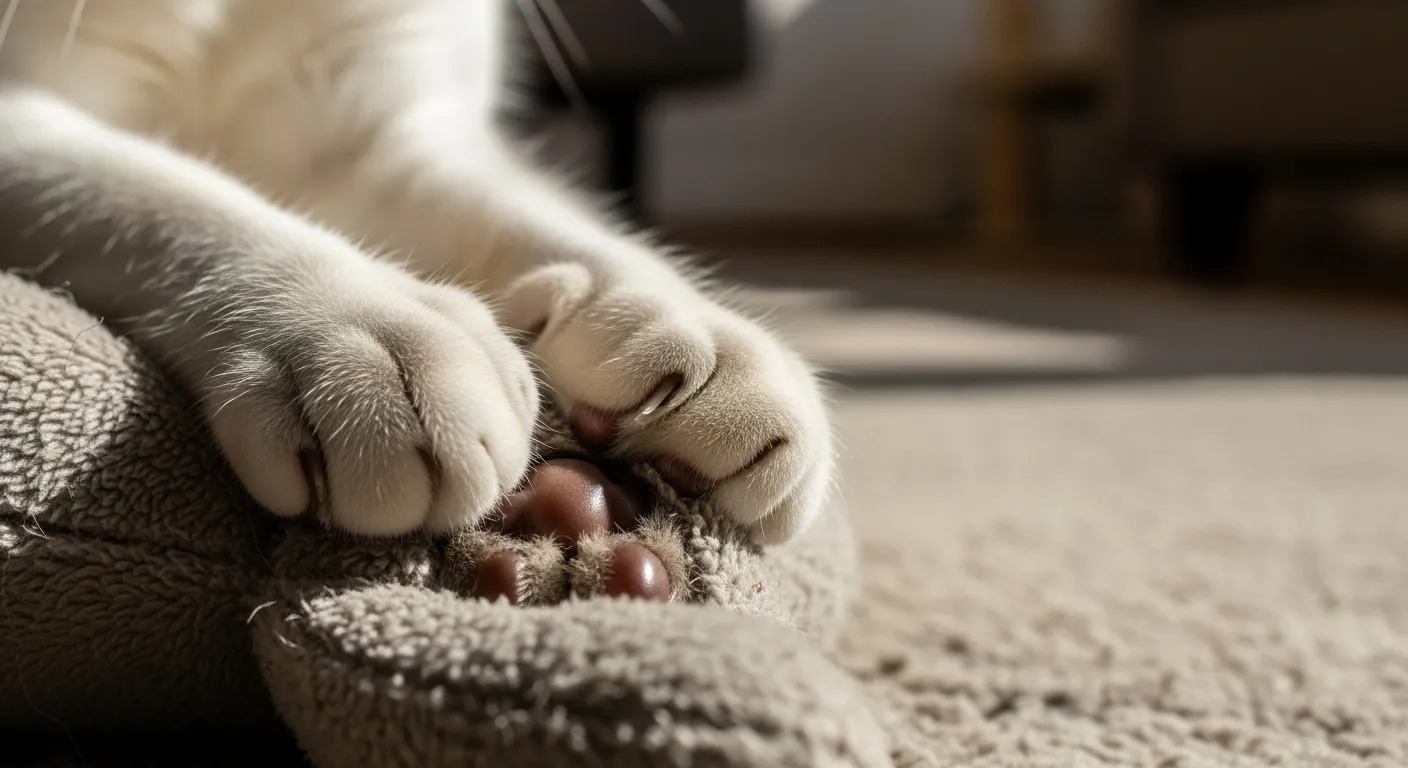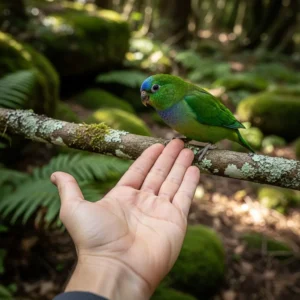
Common Behaviors and What They Mean
Beyond posture, cats have a repertoire of distinct behaviors that communicate specific messages. Understanding these common actions can help you better interpret your cat’s needs and emotions.
What Does It Mean When a Cat Kneads You?
One of the most endearing feline behaviors is kneading, often called “making biscuits.” This is when a cat rhythmically pushes its paws in and out against a soft surface, such as a blanket, another pet, or your lap. The origin of this behavior stems from kittenhood. Kittens knead their mother’s belly to stimulate the flow of milk. When adult cats knead, it is widely believed to be a regressive, comforting behavior that signifies deep contentment and security. They are essentially telling you that they feel as safe and happy with you as they did with their mother. Cats also have scent glands in their paws, so kneading is another way they mark their territory—and you—with their familiar scent.
The Mystery of Purring
Purring is perhaps the most recognized sound of cat communication, and it is most often associated with happiness. A cat purring on your lap is almost certainly a content cat. However, purring is more complex than that. Cats also purr when they are stressed, in pain, or even near death. Scientists believe that the low-frequency vibrations of a purr (around 25-150 Hertz) may have self-soothing and even healing properties, helping to calm the cat and potentially promote bone and tissue repair. The key is to look at the context. If the purr is accompanied by relaxed body language, slow blinks, and kneading, it’s a sign of joy. If the cat is hiding, has its ears back, and is avoiding food, the purr is likely a sign of distress, and a veterinary check-up is warranted.
Chirps, Trills, and Other Vocalizations
Beyond the meow, cats make a variety of other sounds. A short, high-pitched “trill” is often used as a friendly greeting, especially by a mother cat calling her kittens. You might hear your cat trill as it walks into a room to greet you. “Chattering” or “chittering” is the strange, clicking sound many cats make when they are watching birds or squirrels through a window. This is thought to be a sign of excitement and frustration, possibly mimicking the “killing bite” they would use on prey.















